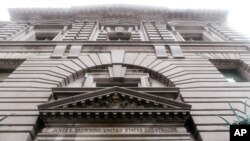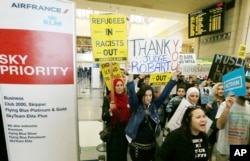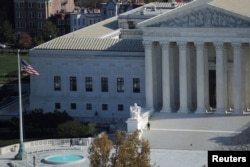The case:
President Donald Trump issued an executive order issued January 27 that barred citizens of seven Muslim-majority countries - Iraq, Syria, Iran, Libya, Somalia, Sudan and Yemen - from entering the U.S. for 90 days, all refugees for 120 days and indefinitely halted refugees from Syria.
On February 3, the state of Washington and state of Minnesota (plaintiffs) filed a motion challenging the president’s executive order, maintaining that the travel ban is unconstitutional. The plaintiffs sought a nationwide temporary restraining order (TRO) asking the court to immediately halt the implementation of the travel ban while the courts hear arguments and decide on the constitutional issue -- a process that could take weeks and eventually require a decision by the U.S. Supreme Court.
U.S. District Court Judge James Robart had to decide whether the executive order was in the public’s best interest, whether people could suffer irreparable harm with the continuation of the ban, and whether the plaintiffs had a strong chance of winning on the constitutional issue. He decided in favor of the two states and granted a temporary restraining order, forcing the government to resume processing visitors as it did before the travel ban while the larger issues are decided.
The Department of Justice filed a notice to appeal Robart’s TRO. Officials brought the case to the San Francisco-based U.S. Court of Appeals for the 9th Circuit. The DOJ argued that the judge’s decision improperly "second-guesses the president’s national security judgment.”
The appeals court denied DOJ’s request to immediately restore the travel ban, pending full consideration of the motion. The court said it would weigh in soon on whether to lift Robart’s TRO after receiving additional briefs from the administration and plaintiffs.
What is the 9th Circuit Court of Appeals trying to decide?
Those briefs have now been delivered, followed by oral arguments which were presented Tuesday. The matter in front of the appeals court is not whether the travel ban is constitutional, but whether it will remain suspended while the constitutional case makes its way through the courts.
The options available to the three-judge panel on the 9th Circuit Court of Appeals are upholding the lower court's stay of the travel ban, striking it down, or sending the case back to the lower court.
What could happen after the appeals court’s decision?
If the restraining order is upheld by the appeals court, the Trump administration can appeal the decision to the U.S. Supreme Court.
It is uncertain, however, if the higher court will agree to review a hearing stay on a TRO case.
If Judge Robart's restraining order is lifted, travelers from the seven Muslim-majority countries will again be banned from entering the country. But the Trump administration has said it will make exceptions for green card holders and at least some individuals with dual nationality. That decision could also be appealed to the Supreme Court.
Keep in mind, there is still litigation pending in the lower district court. Judge Robart is currently accepting filings for the original case that would help him determine whether to issue a preliminary injunction which would continue the TRO until the case is litigated in court.















